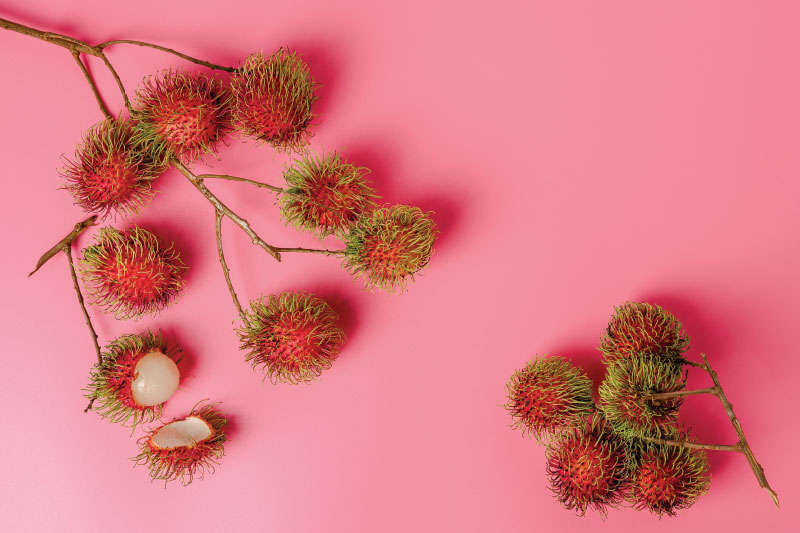
Hairy But Not Scary
Don’t’ be put off by the rambutan’s punky looks: there’s a sweet gem hidden inside
Words: Ariya Chaiyarit
Photo & Style: Samatcha Apaisuwan
Appearances can be deceptive, and nothing proves this better than one particular Thai fruit. Beneath its punky skin of spiked hair, the rambutan (“ngo” in Thai) hides an exquisitely sweet mouthful of translucent flesh.
Native to Southeast Asia, this tropical fruit is round or oval in shape with a leathery reddish skin covered in red, yellow or green hair. The peculiar exterior of the fruit led to its name, derived from the Malay word “rambut”, meaning “hair”.
Rambutan began its journey to global fame in the 13th century when Arab merchants shipped the fruit across the Indian Ocean to Africa. In the 19th century, the Dutch transported it from Indonesia to South America, from where it spread north and took root in the tropical climes of the southern United States.
Thailand began cultivating rambutan in 1926, when seeds were planted in Surat Thani’s Ban Na San district by Chinese-Malay trader Khun Vong. Nowadays, rambutan orchards have spread to Chanthaburi, Rayong, Trat and Chumphon.
But since rambutan trees can grow in almost any type of soil, they are also found in the North and Northeast of Thailand. In fact, the once-exotic spiky treats are now among the most familiar fruits in the country.
Between April and July, many Thai rambutan orchards serve up a “fruit buffet” where fruitaholics can feast on the hairy fruit for just a small entrance fee.
Though rambutan is generally consumed fresh, it is also the star ingredient in several desserts. Think rambutan served drenched in syrup or coconut milk, or added to jelly. It even finds its way into savoury dishes such as red curry and pork-stuffed rambutan soup.
So, don’t judge the rambutan by its cover. Simply tear one open to enjoy the deliciously sweet flesh. But don’t forget to spit out the seed!
